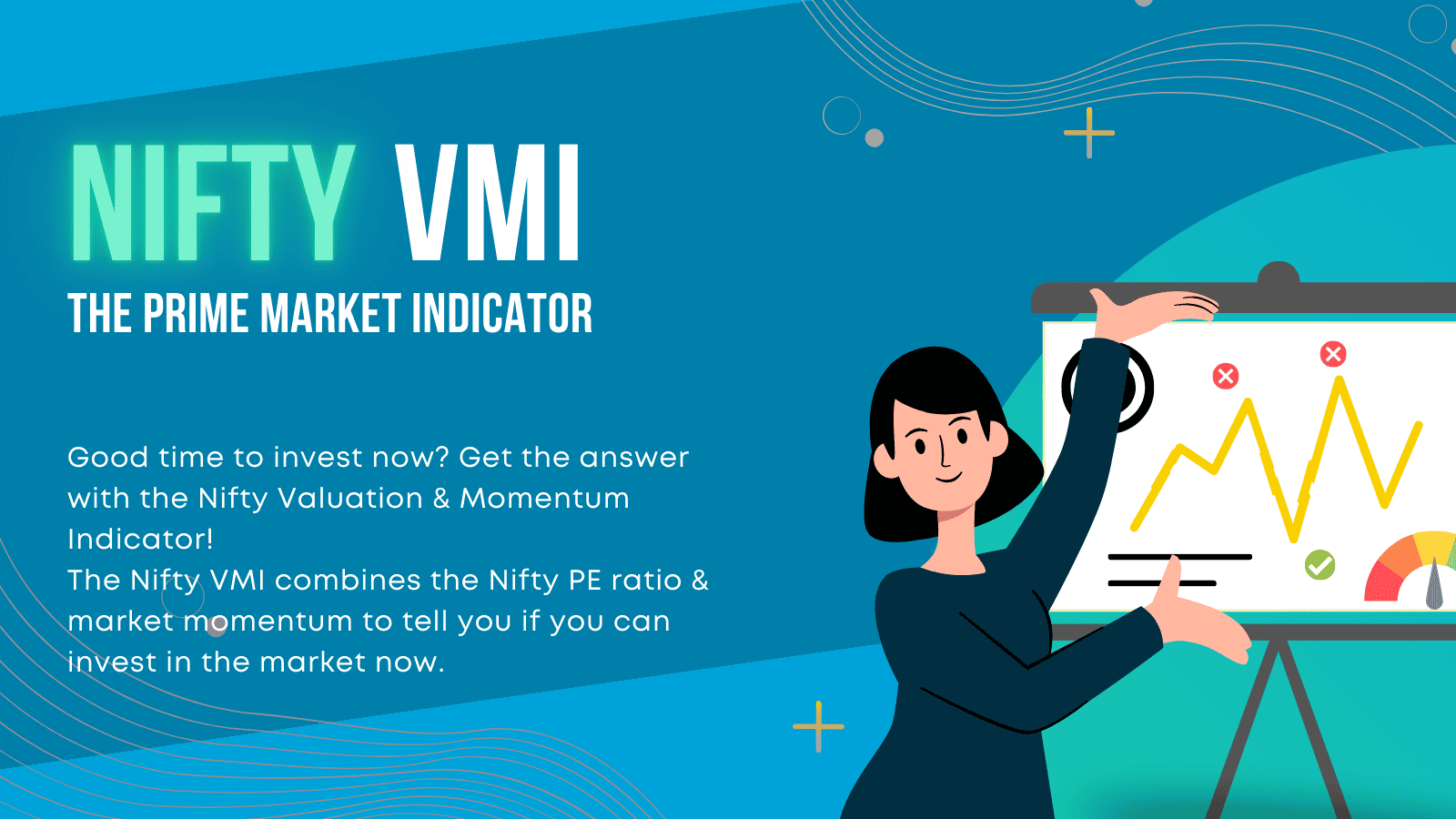
Nifty Momentum Indicator
Nifty 50 prev close: 25763.3 0.16%
Investment indicator: Should you invest at the current Nifty PE ratio levels?
Investment indicator - Subscribers and trial users only!
PrimeInvestor investment indicator is a tool that tells you whether it is a good time to invest in the market currently. It is available only to PrimeInvestor subscribers and trial users.
Please subscribe or register for a free trial to access.
Nifty VMI – how it gauges market mood
The investment action suggested by the Nifty VMI has been derived by analysing over 20 years’ worth of data on the Nifty PE ratio, the Nifty PB ratio and different momentum indicators of the Nifty 50 index.
Market mood is a factor of both valuations and sentiment of the ongoing market cycle. Going by valuations alone to judge market mood can result in premature action as the Nifty PE ratio can be subdued or high for a prolonged period. Using Nifty momentum alone can mean mistiming at getting in at highs or ignoring good investment opportunities.
The Nifty VMI therefore capitalises on both valuation signals and momentum triggers to check if the market mood is conducive to invest now. The Nifty VMI goes the additional step to consider the investment timeframe, since longer timeframes have a different risk-return behaviour than shorter timeframes given the prevailing market mood.
- Valuation Indicator: The green zone is when the Nifty PE ratio is at the lower end of the range based on average PE levels. The yellow and orange zones come into play when the Nifty PE ratio moves out of the comfort levels into the more expensive zones. The red zone is, obviously, when the Nifty PE ratio reaches expensive levels. To test the effectiveness of this indicator, we took the daily consolidated Nifty PE Ratio for the past 20 years, analysed the trends in the Nifty PE Ratio along with the Nifty PB ratio. As the PE over the years can markedly shift as economic and market scenarios change, benchmarking current valuations against very old Nifty PE ratio levels can be misleading. Therefore, our algorithm to fix the cut-offs is dynamic to consider structural shifts in the Nifty PE ratio levels.
- Momentum Indicator: This indicator is the second factor that the Nifty VMI uses to decide if investing at the prevailing market levels has the potential to deliver satisfactory returns with low risk. The indicator uses moving averages of different timeframes to gauge whether market momentum is strong, weak or somewhere in between. The model uses a combination of short-term and medium-term moving averages of the Nifty 50 to classify momentum into 3 broad groups of low, partial and high momentum.
- Nifty VMI: This indicator considers the current Nifty PE ratio in context of the valuation zone, the strength of momentum, and the investment timeframe to gauge market mood. We designed this indicator based on the quantum of returns generated in different timeframes, on all possible combinations of the Nifty PE ratio and momentum that the past 20 years have thrown up, and on the probability of losses. The Nifty VMI considers loss instances as risks and average returns as reward to build a matrix of valuation zones, risks, and reward. This matrix is used to peg whether investing now can pay off in terms of risk-return potential.
Key points to note on the Nifty VMI
The Nifty VMI is an extremely useful market mood and investment indicator. However, there are a few points to note:
- The Nifty VMI is based on the Nifty 50 PE ratio and momentum alone. The indicator is based on past return and risk trends in the market at different valuations and momentum levels and how the markets will behave if those trends repeat themselves. While the Nifty 50 is definitely a broad market indicator, some market segments such as say the mid or small-cap segment may behave differently in both returns and downsides compared to the Nifty 50.
- The Nifty VMI is not an indicator to book profits, sell, or exit your funds and stocks. It is an investment indicator only.
- The Nifty VMI considers returns of the Nifty 50 index to gauge whether it is the time to invest in the equity market. It is not a call on any specific stock or fund. It tells you whether you can invest in equities now. You will have to pick your own stocks or funds or ETFs to invest in or use our recommendations - Prime Stocks or Prime Funds 😊
- The Nifty VMI’s risk-return calculations were done on a lumpsum basis alone and is ideally suitable for such investment decisions. So you can use them for stocks that you are in your buy list. If you are investing through SIPs, you will be already investing at different market levels, reducing the timing risk, and averaging costs. Therefore, the Nifty VMI can be less effective. You can at best decide to deploy additional lump sums other than the SIPs you are running, when our indicator suggests that it is a good time to invest.
- Always consider your risk level and timeframe before making any investment.

